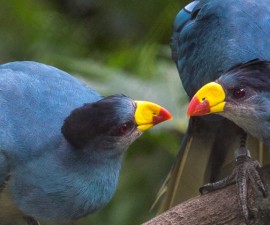Bearing a name befitting a superhero, bee-eater birds are precise, agile predators with a complex social structure.
BY Wendy Perkins
Photography by Ken Bohn
Videography by Dustin Trayer
Watch a bee in its typical erratic, zigzagging flight pattern, and one might wonder how the term “make a beeline” ever came to mean a direct approach. However, bee-eater birds are astonishingly agile on the wing, easily employing the rapid twists and turns necessary to intercept their prey. It’s not just their hunting ability that makes these birds so interesting—it’s also the precise food prep that occurs between “gotcha” and “gulp.” And the species’ social structure—one of the strongest among birds—adds to their fascination quotient.
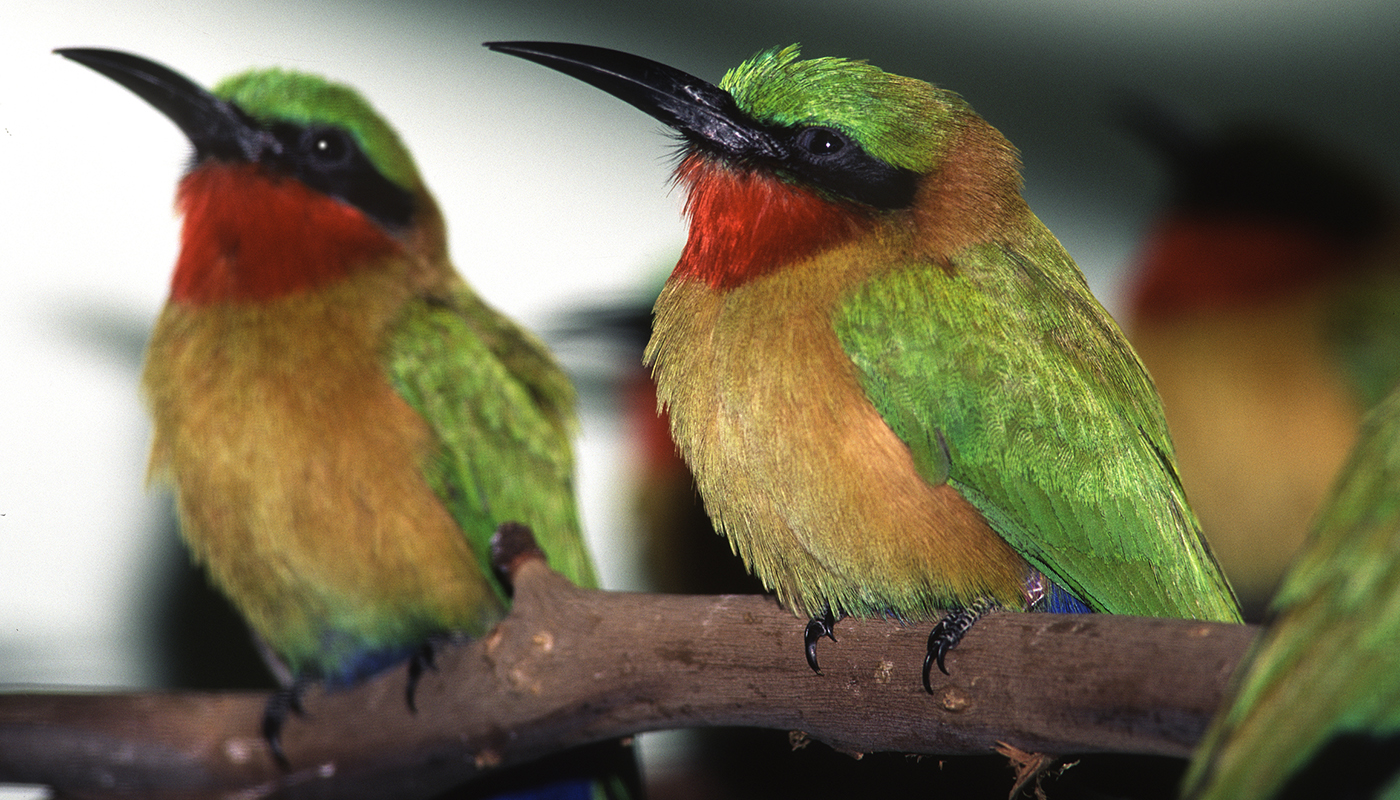
The Art of Bee-ing
Most of the 22 species of bee-eater birds Merops spp. are found in the tropical regions of Africa and Asia, with a single species inhabiting Europe and another in Australia. Related to hoopoes, kingfishers, and rollers, they are exquisitely nimble aerial predators. While bees make up the largest part of their diet, they also take flies, beetles, and other insects.
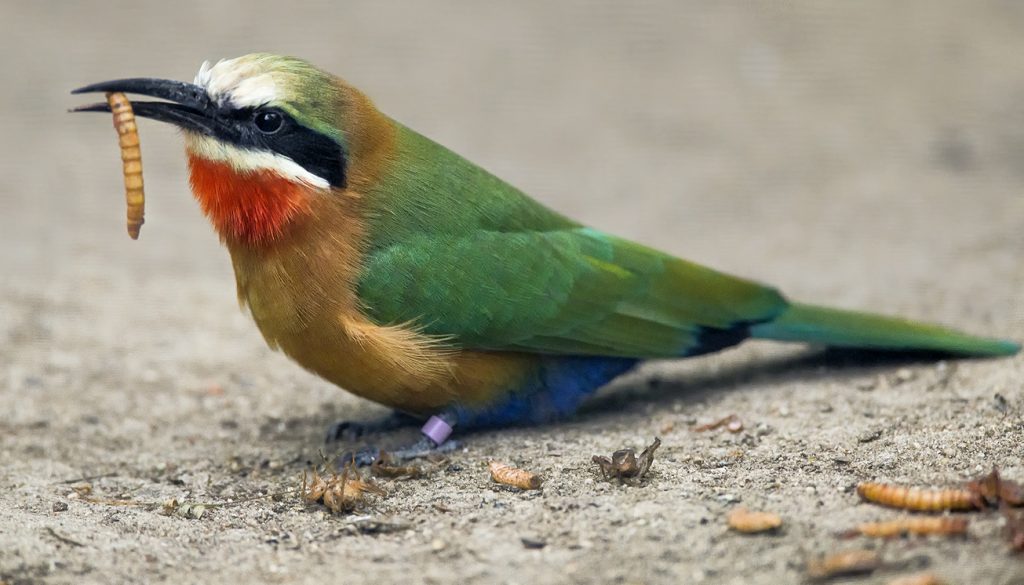
VARIETY ADDS SPICE
Despite their name, bee-eaters also feed on other types of insects and invertebrates.
At the Safari Park, in a clearing along the shady path leading from Nairobi Village to the gorillas, a colony of chattering, white-fronted bee-eaters Merops bullockoides mesmerizes guests. The birds’ rolling calls—“Krrrrrt! Krrrrrt!”—fill the air. Visitors’ heads twist and turn as if at a tennis tournament, as they try to watch the birds’ acrobatic pursuit of prey. With this species, an attempt to “watch the birdie” can be a daunting task!
They’re not the only animals that eat bees, but their hunting ability has earned admiration among humans. Bee-eaters nab bees in flight, a form of hunting called hawking. Considering the skill needed to anticipate and follow prey movement and snatch it from mid-air, it’s an astonishing feat.
While one can easily miss the moment of capture, visitors to the bee-eater exhibit at the Park get a rare view of the next step. The successful hunter brings the treasure to a branch, then carefully positions the insect in its beak—then pounds the prey against the perch, stunning or killing it. But it’s still not ready to eat. Next, the bird turns the bee around, vigorously rubbing the tail end against the branch to remove the stinger and venom sac. Only then, with an accomplished toss of the head, is the insect flicked into the mouth and down the gullet.
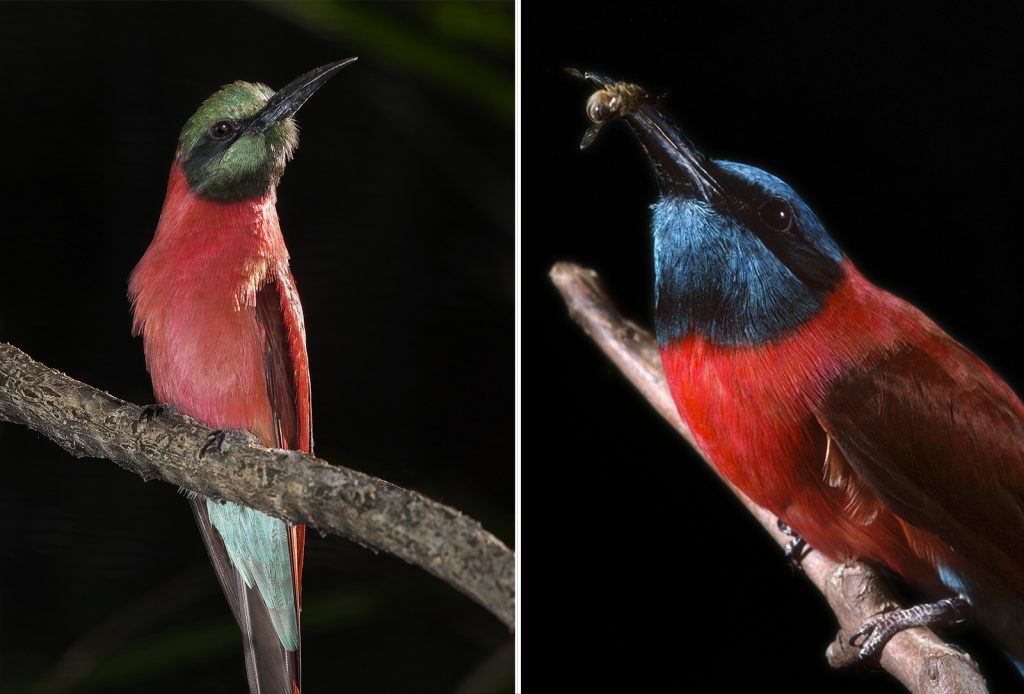
INNOVATIVE HUNTERS
Native to central and southern Africa, carmine bee-eaters Merops nubicus often hunt insects from the backs of antelope, zebras, warthogs, storks, and other animals.
At the Park, the bee-eaters have a choice of food items daily, including live crickets, mealworms, and, of course, bees. Two beehives are maintained at the exhibit, providing top-notch nutrition and enrichment for the birds. The effort to give the birds a natural diet has played an important role in our success in breeding the species. With more than 100 hatches, the Park has the most prolific breeding colony of bee-eaters in North America!
“We’ve really worked hard to better understand the biology of the species,” said Michael Mace, curator of birds at the Park. “And our keeper staff has done an amazing job and cracked the code.” Naturally, birds need to be physically healthy and fit to breed, but there are other requirements that need to be met, too. Proper nesting sites and materials, as well as social necessities, must all be understood and planned for.
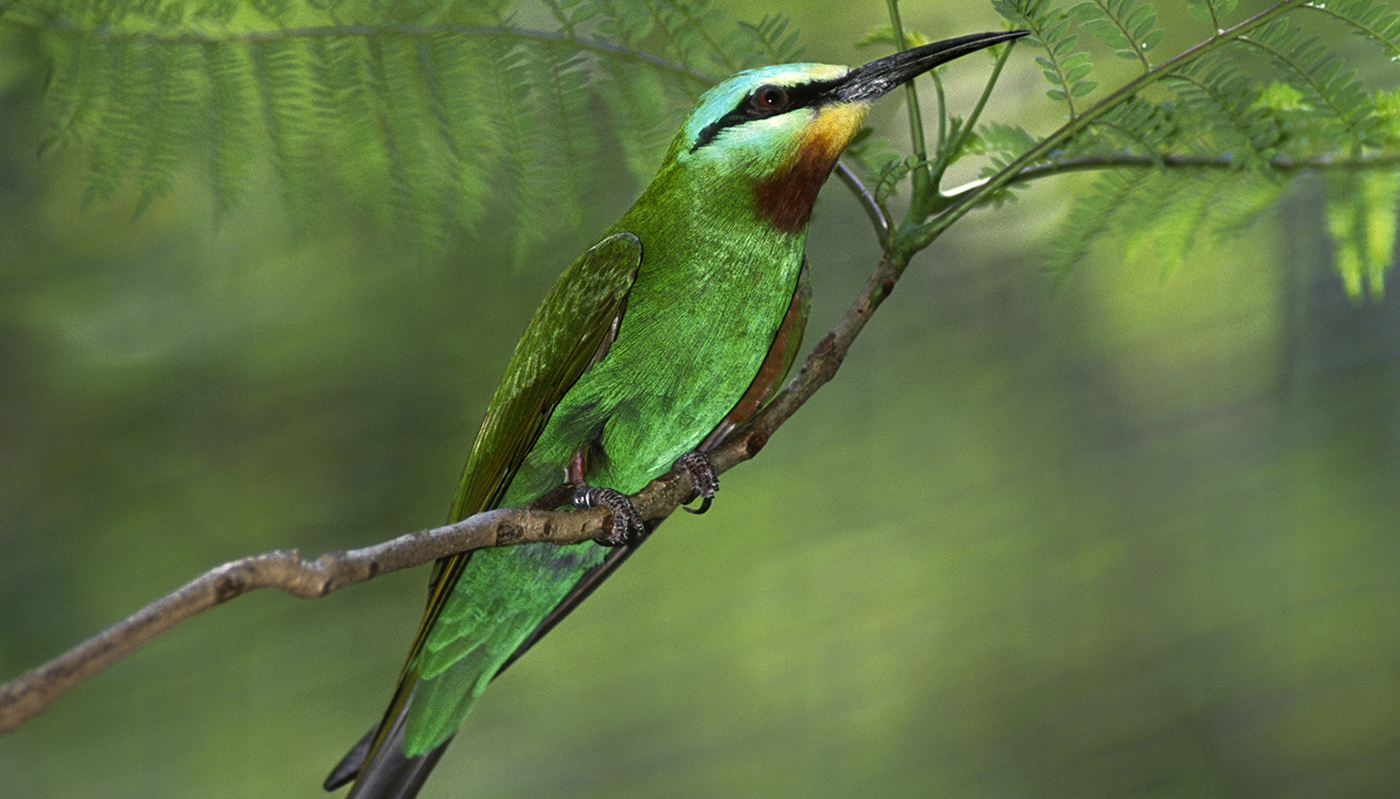
Digging In
Bee-eater nests are tunnels dug into cliff faces ending in a nest chamber. The animal care staff at the Park replicated that setting with tubes of sandy soil positioned horizontally in a vertical wall. The birds use their beaks and feet to excavate their tunnel nests. The addition of soil could be one of the keys to our success with these birds. “Digging the tunnels themselves may very well be a part of the reproductive process,” Michael explained.
Once the nest chamber at the end of the tunnel is furnished with soft grasses, the female begins to lay a clutch of two to five eggs. Although she produces the clutch over a period of a few days, she spends most of her time in the nest to prevent other females from laying their eggs there.
After an incubation period of about 20 days, the chicks begin to hatch. Since the eggs were laid at different times, the chicks hatch over a few days. The first to hatch has a “head start” on gaining strength over its siblings, but the latter ones get a little help from their friends and family.
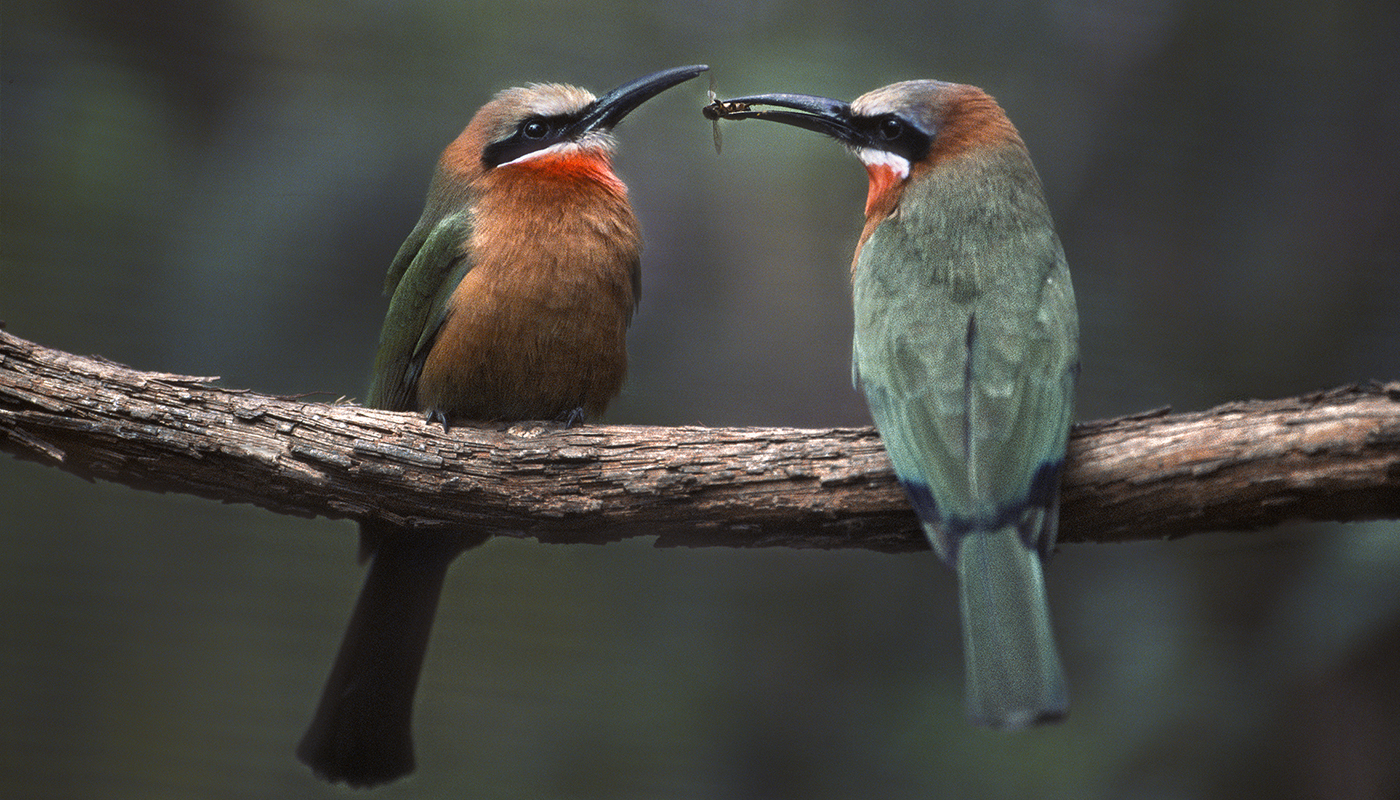
Social Network
Highly social, white-fronted bee-eaters live in colonies of up to about 100 individuals. The colonies themselves are made up of a number of clans of 7 to 17 birds. When it comes to raising offspring, these birds take a group approach: previous generations help to raise and protect the hatchlings. Studies in the field have shown that nests with helpers have twice the survival success rate as those that don’t. Helpers may bring food to the brooding female and sometimes even take a turn incubating the eggs for a short time.
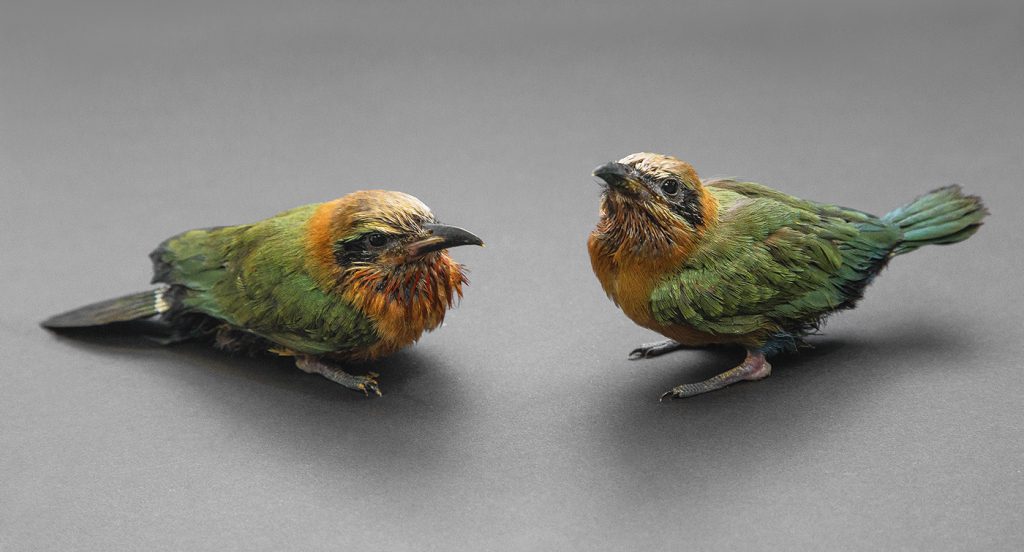
PRIDE AND JOY
The San Diego Zoo Safari Park has hatched more than 100 white-fronted bee-eaters, including these two chicks from the 2016 generation.
The newest members of a white-fronted bee-eater colony fledge after about a month in the nest. While they develop their adult plumage at six months of age, they often remain with their family for another three months. After that, they may pair into their own social groupings.
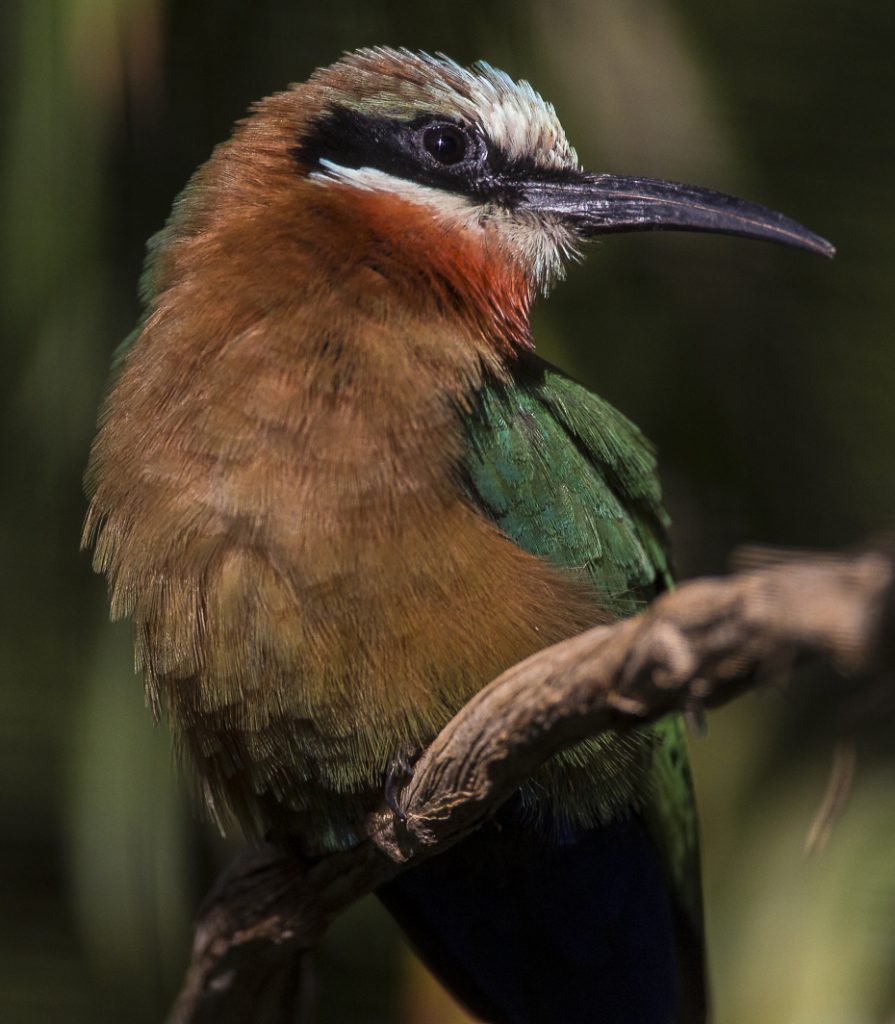
JUST RIGHT
White-fronted bee-eaters are considered a medium sized bird, measuring about 8.5 to 9.5 inches long.
Male bee-eaters remain with their natal colony. Females often leave their group and join the family of their mate. Yet, they maintain loose ties with the group they hatched with, as well. Sometimes, if she is not nesting herself, a female may return to help her parents with their current nest. When she’s no longer needed, she returns to her life with the “in-laws.”
The social connectivity among white-fronted bee-eaters is easy to see within the colony at the Park. From the raucous chorus of their chattering calls and disciplinary squawks to group sunbaths and “games” of chase, these birds excel at the art of community.


